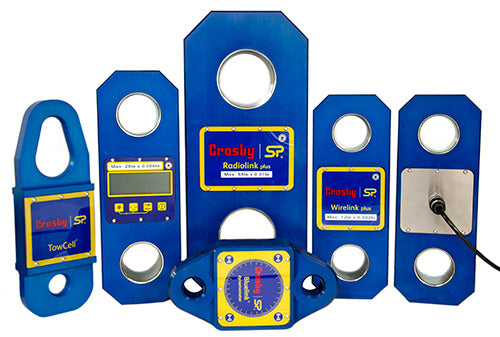
How to Select a Load Cell
Ask these 4 simple questions to pinpoint the exact load cell you need
You don't have to be an expert in load cell technology to select the one you need and feel confident that it will get the job done right.
The technology found in many modern load cells can seem overwhelming at first, but in industries where precision is a must, choosing and properly using an appropriate load cell could mean the difference between another successful day at work and an expensive or potentially dangerous miscalculation.
Luckily, we're in 2021. Once you select the load cell that's right for your application, you can enjoy enhanced safety, accuracy, and efficiency through the use of simple software and load cell readouts that fit in the palm of your hand, function from nearly a mile away, and provide +/- 0.1% accuracy.
Despite the many brands and types of load cells available on the market today, choosing the exact right one for your needs is fairly simple when you break it all down. Let's walk through the 4 simple questions that will guide you in selecting the right load cell.
1. What is your application environment?
First, it's important to consider the general environment in which you'll be using the load cell. In terms of durability, there's a wide spectrum ranging from low-capacity, unsealed load cells to weatherproof multi-ton options.
If you're needing load cells for industrial applications involving cranes or heavy loads, you'll want to select a trusted load cell brand that's been rigorously tested and proven to have high manufacturing standards. If the load cell could be exposed to water you'll want one rated for common environmental protections like IP67 or NEMA6.
2. What are you needing to measure?
Next, what is the specific goal you're trying to accomplish with a load cell? Tug testing? Structural weighing? Laying cable, or maybe something else?
"Load cell" is a broad term that encompasses many different electronic measurement tools including tensiometers, dynamometers, load shackles, and even common crane scales.
Of course, you'll want to get a load cell that's designed to safely measure whatever it is you're working with. Still, keep in mind that there is some crossover in what these load cell types can do. Below is a list of common load cell types found in the rigging and lifting industry, plus their common application.
Compression Load Cells - structural weighing and the confirmation of mass or center of gravity
Tension Load Cells - measures tension levels, commonly used for overhead weighing and heavy lift applications
Crane Scales - weighs pretty much anything that can be fasted to its hanging hook, crane optional
Shackle Load Cells - common in industrial crane applications, especially limited headroom or super heavy lift projects
Towcells - monitors tensile towing forces, engineered for emergency/rescue services, salvage, 4X4 events, and other vehicle load monitoring applications
Running Line Dynamometers - measures tension, line speed, and distance for wire rope, electrical cables, and synthetic rope
Clamp On Line Tensiometers - measuring guy wire and wire rope tension

3. How do you want to transmit and check load cell readouts?
If you have a smartphone in your pocket, you know just how far wireless technology has come over the past few years. Load cells are no exception. In fact, many modern load cells such as industry-leading Straightpoint load monitoring load cells, are compatible with your cell phone or smart device via Bluetooth or by simply downloading a free load cell monitoring app.
These advanced wireless load cells work from long distances for increased safety and can also sync with a larger computer or a special wireless handheld reader to remotely read and adjust load cell setups.
Of course, wired load cell options still exist, but it's important to understand there are many more options in the field these days that could bring you added benefits.
4. What weight capacity and dimension requirements do you have?
Finally, once you know the level of durability you need, the type of load cell that measures your workload, and whether you want wired or wireless transmission, you're almost finished. The final step in how to select a load cell is to ensure you get one that can handle your application's weight capacity and physical dimensions.
Whether it's in pounds, kilograms, tons, inches, or centimeters – check the spec sheets carefully to ensure the load capacity and physical dimensions of the load cell itself align with your application. You shouldn't have any doubt in your mind that what you order can handle your load safely and effectively.
Summary
Whether you have old load monitoring load cells that need to be replaced or are investing in these intelligent tools for the first time, selecting the proper load cell is important. Professionals in many different industries rely on these tools to provide precise measurements that could otherwise mean costly mistakes.
First, decide on the level of durability you want. Then, consider what you're needing to measure and the way you'd like to transmit those measurements. Finally, narrow in on the load cell specs to find one that's able to comfortably handle your application.
Still have questions? Give our rigging and lifting product experts a call at 800-404-7068.

